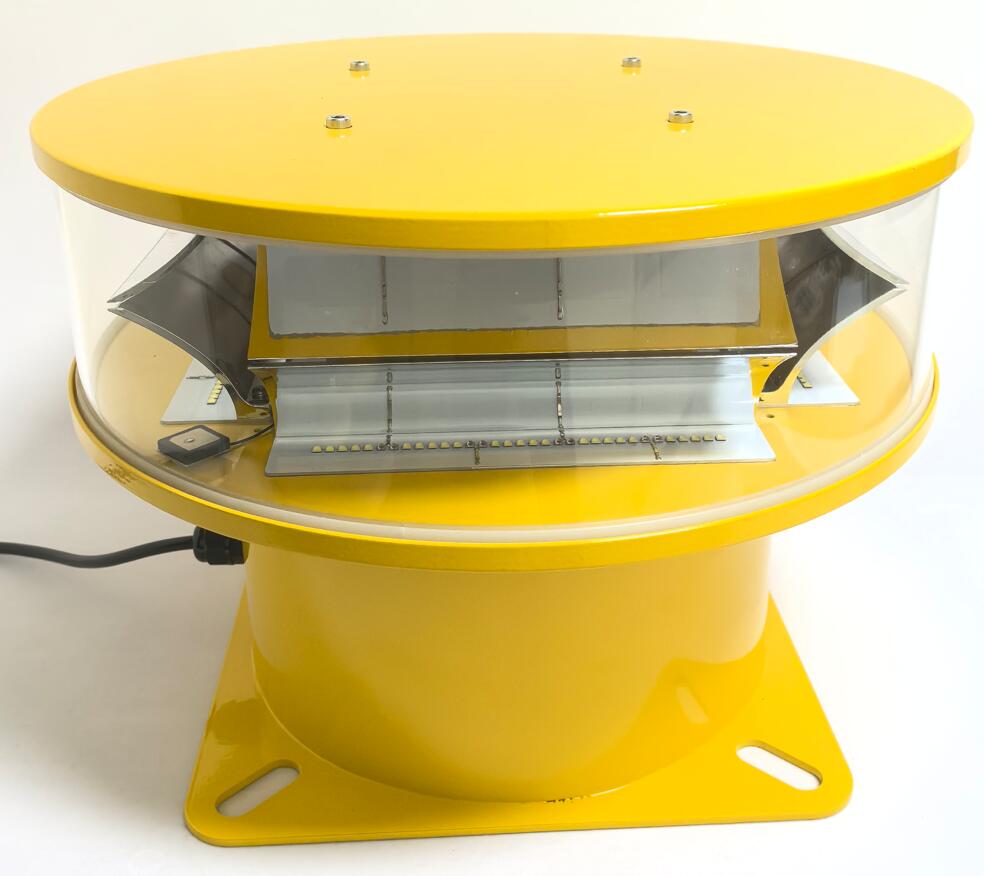High Intensity Obstacle Lights: Guardians of Aviation Safety
Introduction to Critical Airspace Protection
In our vertically expanding world, high intensity obstacle lights have become silent sentinels protecting aircraft from potential collisions with man-made structures. These powerful visual markers serve as beacons of safety, ensuring tall structures remain clearly visible to pilots navigating through both congested urban airspace and remote flight corridors. As global infrastructure continues reaching new heights, the role of high intensity obstacle lights in aviation safety has never been more crucial.
The Science Behind High Visibility Lighting
Optical Performance Characteristics
Daytime Visibility: 20,000-200,000 candela output for clear recognition in sunlight
Nighttime Operation: Adaptive intensity reduction to prevent pilot glare

Flash Patterns: Standardized 40-60 flashes per minute for maximum conspicuity
Spectral Quality: Precision-tuned wavelengths for optimal atmospheric penetration
| high intensity obstacle light |
Advanced Engineering Features
Multi-Lens Optics: Engineered light distribution for 360° coverage
Thermal Management: Heat dissipation systems for continuous operation
Impact Resistance: Vibration-proof construction for windy environments
Global Standards and Compliance Framework
International Aviation Requirements
ICAO Annex 14: Defines three classes of obstacle lighting intensity
FAA AC 150/5345-43J: Specifies photometric requirements for U.S. airspace
| high intensity obstacle lights |
EASA CS-ADR-DSN: European technical standards for obstacle lighting
Regional Implementation Guidelines
Height Thresholds: Varying requirements from 45m to 150m structure height
Zoning Regulations: Special provisions for airport approach paths
Environmental Considerations: Wildlife-friendly lighting protocols
Cutting-Edge Technological Innovations
Smart Lighting Systems
Automatic Intensity Regulation: Light-sensitive photocell controls
Remote Monitoring: IoT-enabled performance tracking
Predictive Maintenance: AI-driven failure anticipation
Sustainable Power Solutions
Hybrid Solar-Grid Systems: Uninterrupted operation assurance
Energy Storage Advances: Lithium-ion battery improvements
Power Management: Optimized consumption algorithms
Specialized Applications Across Industries
Urban Infrastructure Protection
Skyscraper summit lighting configurations
Bridge cable and pylon illumination systems
Stadium lighting integration challenges
Renewable Energy Sector
Wind turbine blade tip lighting solutions
Solar farm perimeter marking
Offshore wind farm lighting networks
Transportation Corridors
Airport approach path lighting
Railway viaduct marking
Highway overpass illumination
Installation Best Practices
Structural Integration Techniques
Roof-mounted vs. side-mounted configurations
Aircraft warning paint coordination
Lightning protection considerations
Maintenance Protocols
Cleaning frequency for optical surfaces
Component replacement schedules
Weather damage inspection procedures
Future Trends in Obstacle Lighting
Enhanced Pilot Assistance Systems
ADS-B integration potential
Augmented reality visualization
Drone corridor marking
Environmental Adaptations
Migratory bird protection features
Light pollution reduction technologies
Climate-resilient material development
Lighting the Way Forward
As our built environment continues its upward trajectory, high intensity obstacle lights remain fundamental to maintaining safe airspace operations. The evolution from simple incandescent beacons to today's intelligent lighting systems demonstrates the aviation industry's commitment to innovation while prioritizing safety.
Looking ahead, the integration of smart technologies and sustainable solutions will further enhance the effectiveness of high intensity obstacle lights, ensuring they continue to protect both manned and unmanned aircraft in increasingly complex airspace environments. Their ongoing development represents a critical investment in the future of global aviation safety infrastructure.
